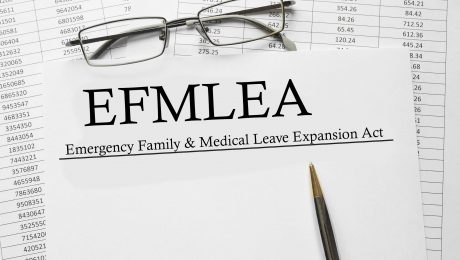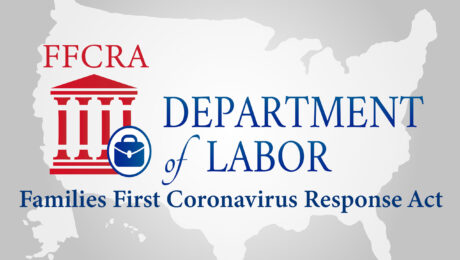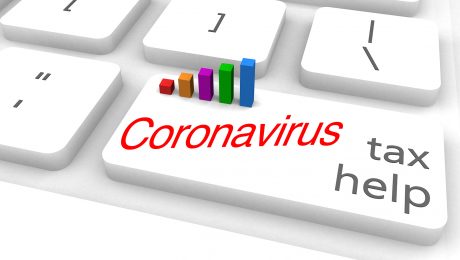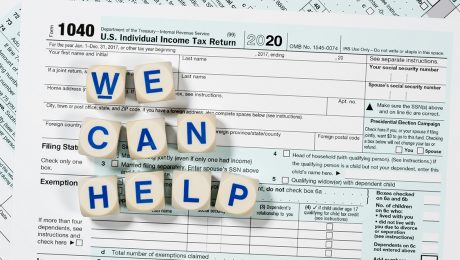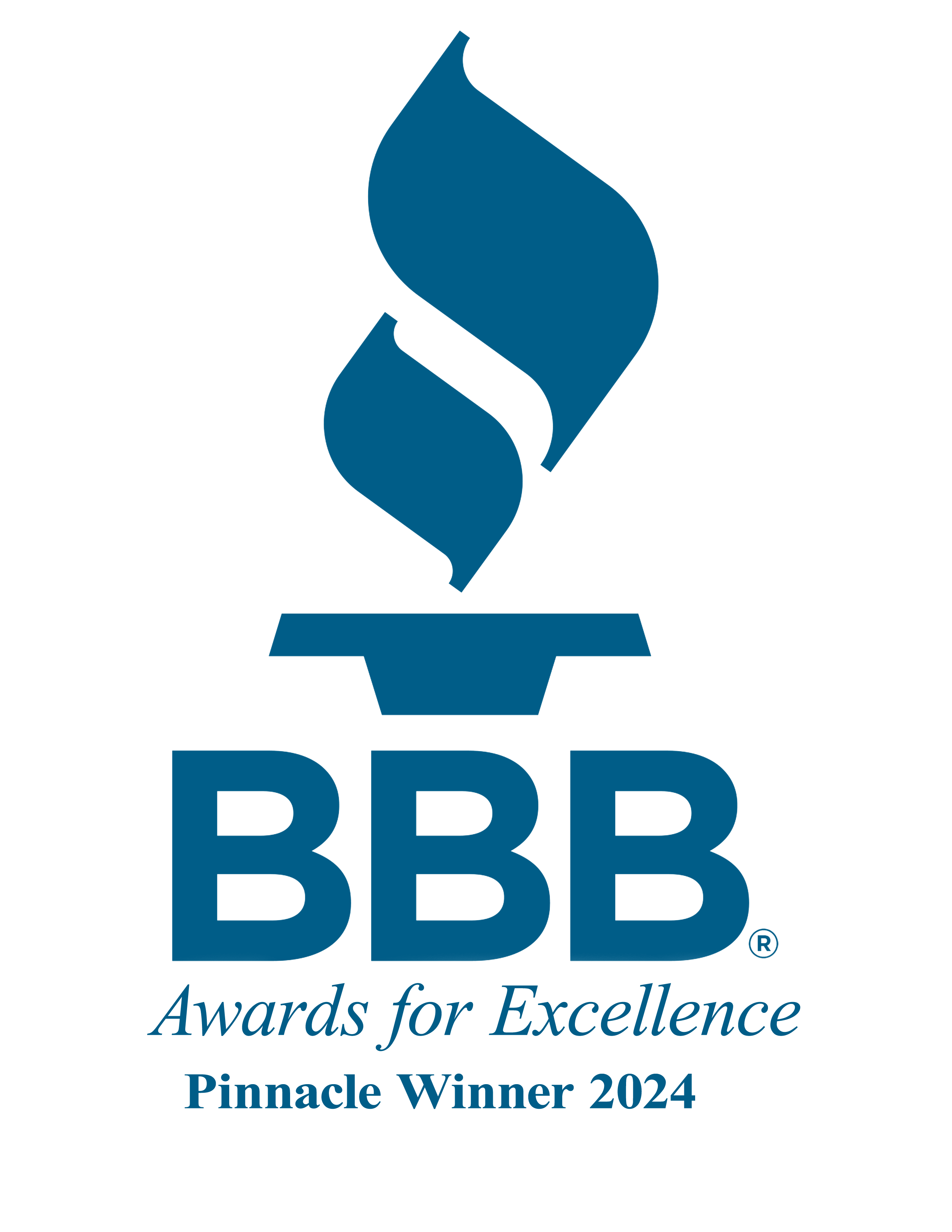Everything You Need to Know About Coronavirus Federal Small Business Stimulus Aid Programs
A breakdown of all the federal programs and aid for small business coronavirus assistance.
Three separate packages approved by Congress and signed by President Trump over the past weeks combined offer a variety of assistance to businesses. Here’s a breakdown of what’s in those packages and how your business can take advantage of these relief efforts.
Coronavirus Preparedness and Response Supplemental Appropriations Act
What is it?
Signed into law on March 6, The Coronavirus Preparedness and Response Supplemental Appropriations Act provides $8.3 billion in emergency funding for federal agencies to respond to the coronavirus outbreak, enabling the U.S. Small Business Administration to offer $7 billion in disaster assistance loans to small businesses impacted by COVID-19.
What does it mean for small business?
The SBA is offering designated states and territories low-interest federal disaster loans to small businesses suffering substantial economic harm as a result of the coronavirus.
These loans may be used by small businesses to pay fixed debts, payroll, accounts payable and additional bills that can’t be paid because of COVID-19’s impact. The interest rate is 3.75% for small businesses without other available means of credit. The interest rate for non-profits is 2.75%. Businesses with credit available elsewhere are not eligible.
The SBA loans come with long-term repayments, up to a maximum of 30 years, in an effort to keep payments affordable. Loan terms are determined on a case-by-case basis, according to individual borrower’s ability to repay.
The SBA has amended its disaster loan criteria to help borrowers still paying back SBA loans from previous disasters. By making this change, deferments through December 31, 2020, will be automatic. Hence, borrowers of home and business disaster loans do not have to contact SBA to request deferment.
Where can I learn more?
SBA Coronavirus Small Business Loan Page
Coronavirus (COVID-19): Small Business Guidance & Loan Resources
Families First Coronavirus Response Act
What is it?
Signed into law on March 18, the Families First Coronavirus Response Act (FFCRA or Act) contains eight divisions designed to provide assistance to covered employees and households with eligible children affected by COVID-19. Key components of the Act include:
- Mandatory emergency paid sick leave for covered employees who, as a result of COVID-19, are quarantined, symptomatic or caring for a symptomatic individual, or caring for a child whose school has been closed.
- An expansion of unemployment benefits.
- Modifications to the USDA nutrition and food assistance programs.
- New requirements for coronavirus diagnostic testing.
- A temporary increase in the Medicaid federal medical assistance percentage (FMAP).
What does it mean for small business?
The FFCRA affects small businesses in two key ways:
- Paid sick and family leave. The law requires all private businesses with fewer than 500 employees to provide emergency paid sick or family leave for employees affected by the coronavirus outbreak.
- Employer tax credits. The law provides employers
with fewer than 500 employees with refundable payroll tax credits to cover the
cost of providing the paid sick leave and the paid FMLA leave to their
employees. Specifically, the law states that:
- Employers will receive 100% tax credit against their payroll tax liability up to the capped amount of benefits they must pay.
- Health insurance costs are also included in the credit.
- Self-employed individuals receive an equivalent credit.
- If an employer is owed more than the capped amount and a refund is owed, the IRS will send the refund as quickly as possible.
- Reimbursement will be quick and easy to obtain.
Where can I learn more?
- The full text of the Act can be found at Congress.gov.
- For additional information regarding the mandatory emergency paid sick leave, see this detailed guide provided by the U.S. Department of Labor.
Coronavirus Aid, Relief, and Economic Security Act (CARES Act)
What is it?
The CARES Act, which is expected to be passed by both houses of Congress and signed by the President in the near future, has a number of components aimed at helping small businesses survive and recover from losses suffered during the coronavirus outbreak. Key components of the CARES Act include a loan program from the SBA, changes to unemployment benefits and changes to business tax filing requirements.
What does it mean for small business?
Anticipated key components of the CARES Act include:
- Small Business Paycheck Protection Program: A new lending program that allows businesses to borrow enough to cover monthly payroll costs for businesses for up to 2.5 months. If used for payroll, mortgage interest or other qualified expenses, these loans will be forgiven as long as the employer continues to employ its workers or rehires them when they reopen for business.
- Business tax provisions: Employers can defer payment of the employer share payroll taxes.
- Payments for individuals: It is anticipated those who make less than $75,000 a year will receive direct payments of $1,200 per individual ($2,400 joint return) plus $500 per child. This will phase out for incomes above $75,000 ($150,000 joint filings).
- Unemployment assistance: If your business is closed because of coronavirus and your employees cannot work from home, or your employees are unable to work due to illness or the need to take care of someone who is ill with the virus, they can collect unemployment.
Where can I learn more?
Small Business Administration’s COVID-19 page
More info on IRS tax changes can be found here.
More information on filing for unemployment assistance can be found at the U.S. Department of Labor, though you or your employees will need to file through your state’s unemployment program.
- Published in Business Lending, Small Business, Tax
Emergency Family and Medical Leave Expansion Act
Emergency Family and Medical Leave Expansion Act – Impacts You if You Have Less Than 500 Employees
Expanded Coverage and Eligibility – The Act significantly amends and expands FMLA on a temporary basis.
- For this emergency FMLA leave expansion provision only, the current employee threshold for FMLA coverage would change from only covering employers with 50 or more employees to instead covering those employers with fewer than 500 employees. As a result, thousands of employers not previously subject to the FMLA may be required to provide job-protected leave to employees for a COVID-19 coronavirus-designated reason.
- Any employee who has worked for the employer for at least 30 days prior to the 1st day of designated leave may be eligible to receive paid family and medical leave. The Act now includes language allowing the Secretary of Labor to exclude healthcare providers and emergency responders from the definition of employees who are allowed to take such leave, and to exempt small businesses with fewer than 50 employees if the required leave would jeopardize the viability of their business. ( We don’t yet know if there is a process for this exemption or how that will work.)
- Eligible Reason for Emergency Leave –The only reason an employee request and take this emergency FMLA expansion leave is to allow the employee, who is unable to work or telework, to care for the employee’s own child (under 18 years of age) if the child’s school or place of care is closed or the childcare provider is unavailable due to an official public health emergency. This is the only qualifying need for Emergency FMLA .
- Amount of FMLA Expansion Leave – Up to 12 weeks of job-protected leave
- The first 10 days of Emergency FMLA may be unpaid. During this 10-day period, an employee may voluntarily elect to substitute any accrued paid leave (like vacation or sick leave) to cover some or all of the 10-day unpaid period.
- After the 10-day period, the employer generally must pay full-time employees at two-thirds the employee’s regular rate for the number of hours the employee would otherwise be normally scheduled.
- The Act limits this pay entitlement to $200 per day and $10,000 in the aggregate per employee.
Calculating Pay for Non-Full Time Employees – Employees who work a part-time or irregular schedule are entitled to be paid based on the average number of hours the employee worked for the six months prior to taking Emergency FMLA. Employees who have worked for less than six months prior to leave are entitled to the employee’s reasonable expectation at hiring of the average number of hours the employee would normally be scheduled to work.
Job Restoration – Employers with 25 or more employees will have the same obligation as under traditional FMLA to return any employee who has taken Emergency FMLA to the same or equivalent position upon the return to work.
However, employers with fewer than 25 employees are generally excluded from this requirement if the employee’s position no longer exists following the Emergency FMLA leave due to an economic downtown or other circumstances caused by a public health emergency during the period of Emergency FMLA. This exclusion is subject to the employer making reasonable attempts to return the employee to an equivalent position and requires an employer to make efforts to return the employee to work for up to a year following the employee’s leave.
Effective Date and Expiration – This program will become effective April 2nd and remain in effect until December 31, 2020.
Emergency Paid Sick Leave Act
This paid leave act is in addition to any paid leave a company already provides, and employers cannot make this run concurrent with their Company paid sick leave – it is in addition to. Companies are prohibited from changing their own leave policies in response to this paid leave act.
Reasons for Paid Sick Leave –This Act allows an eligible employee to take paid sick leave if they are unable to work or telework for ONLY these reasons.
Because the employee is:
1. subject to a federal, state or local quarantine or isolation order related to COVID-19;
2. advised by a health care provider to self-quarantine due to COVID-19 concerns;
3. experiencing COVID-19 symptoms and seeking medical diagnosis;
4. caring for an individual subject to a federal, state or local quarantine or isolation order or advised by a health care provider to self-quarantine due to COVID-19 concerns;
5. caring for the employee’s child if the child’s school or place of care is closed or the child’s care provider is unavailable due to public health emergency; or
6. experiencing any other substantially similar condition specified by the Secretary of Health and Human Services in consultation with the Secretary of the Treasury and the Secretary of Labor.
Paid Sick Leave Eligibility – This provision requires employers with fewer than 500 employees to provide full-time employees (regardless of the employee’s duration of employment prior to leave) with 80 hours of paid sick leave at the employee’s regular rate for Reasons 1, 2 and 3 noted in the reasons for Leave (or two-thirds the employee’s regular rate to care for qualifying reasons numbers 4, 5, or 6 listed above). An important change to this section provides an exception for employers who are healthcare providers or emergency responders at their election.
Cap on Paid Sick Leave Wages – The Act places limits on paid sick leave.
- Paid sick leave wages are limited to $511 per day up to $5,110 total per employee for qualifying leave that is to care for themselves (reasons 1, 2, 3)
- and $200 per day up to $2,000 total to care for others (leave reasons 4, 5 & 6).
Carryover and Interaction with Other Paid Leave – This paid sick leave will not carry over to the following year and may be in addition to any paid sick leave currently provided by employers.
Calculating Rate of Pay – Employees who work a part-time or irregular schedule are entitled to be paid based on the average number of hours the employee worked for the six months prior to taking paid sick leave. Employees who have worked for less than six months prior to leave are entitled to the average number of hours the employee would normally be scheduled to work over a two-week period. A business employing fewer than 500 employees is required, at the request of the employee, to pay a full-time employee for 80 hours of mandated emergency paid sick leave instead of the initial 10 days of unpaid leave permitted by the Emergency Family and Medical Leave Expansion Act (summarized above).
Effective Date and Expiration – This program will become effective April 2nd and remains in effect until December 31, 2020.
Tax Credits For Paid Sick And Paid Family And Medical Leave
This section provides a series of refundable tax credits for employers who are required to provide the Emergency Paid Sick Leave and Emergency Paid Family and Medical Leave described above.
These tax credits are allowed against the employer portion of Social Security taxes. While this limits application of the tax credit, employers will be reimbursed if their costs for qualified sick leave or qualified family leave wages exceed the taxes they would owe.
- Employers are entitled to a refundable tax credit equal to 100% of the qualified sick leave wages paid by employers for each calendar quarter in adherence with the Emergency Paid Sick Leave Act.
- The qualified sick leave wages are capped at $511 per day ($200 per day if the leave is for caring for a family member or child) for up to 10 days per employee in each calendar quarter.
- Similarly, employers are entitled to a refundable tax credit equal to 100% of the qualified family leave wages paid by employers for each calendar quarter in accordance with the Emergency Family and Medical Leave Expansion Act. The qualified family leave wages are capped at $200 per day for each individual up to $10,000 total per calendar quarter. Only those employers who are required to offer Emergency FMLA and Emergency Paid Sick Leave may receive these credits.
(We anticipate more information will be coming soon for employers regarding how to apply for these credits)
Notice Requirements for Employers
Employers will also be required to provide notice to their employees through postings and policies. (We anticipate more information will be coming soon for employers on this requirement soon)
In addition to this federal Act, many states are proposing similar emergency legislation to enact or expand their own paid sick leave or family and medical leave laws to cover coronavirus-related issues. Some of these state laws may be in addition to these new requirements at the federal level.
We will continue to monitor this rapidly developing situation and provide updates as appropriate.
FAQ’s
Can an employee who takes emergency paid sick leave be required to find a replacement worker?
The paid sick leave provisions state that an employer may not require an employee to find a replacement worker when the employee takes such leave.
Must an employer pay out unused emergency paid sick leave if the employee separates from its employment?
An employer is not required to pay unused paid sick leave if an employee separates from employment.
Are employers with 500 or more employees obligated to provide paid sick or leave benefits?
They have no such obligation under this bill. However, they still must comply with obligations under state or local paid sick leave or paid family and medical leave laws and administer sick or paid time off or paid leave provided under company policies or collective bargaining agreements.
- Published in Small Business
Department of Labor release notice for Family First Coronavirus Response Act
The Department of Labor released the required employer notice yesterday. Below are links to the posters, along with posting guidelines and fact sheets regarding the Families First Coronavirus Response Act (FFCRA). The Act goes into effect April 1st (this was clarified yesterday from the original April 2nd date.) Be sure you are in compliance by April 1st.
Posters
· Employee Notice Employee Rights: Paid Sick Leave and Expanded Family and Medical Leave under The Families First Coronavirus Response Act (FFCRA)
· Posting Guidelines Families First Coronavirus Response Act Notice – Frequently Asked Questions
Fact Sheets
· Families First Coronavirus Response Act: Employee Paid Leave Rights
· Families First Coronavirus Response Act: Employer Paid Leave Requirements
FAQ’s
· Families First Coronavirus Response Act: Questions and Answers
· COVID-19 and the Fair Labor Standards Act: Questions and Answers
· COVID-19 and the Family and Medical Leave Act: Questions and Answers
- Published in Small Business
Treasury, IRS and Labor announce plan to implement Coronavirus-related paid leave for workers and tax credits for small and midsize businesses.
The IRS has announced that small and midsize employers can begin taking advantage of two new refundable payroll tax credits provided by the Families First Coronavirus Response Act (the Act). The credits are designed to give businesses with fewer than 500 employees funds to provide coronavirus-related paid leave, either for an employee’s own health needs, or to care for family members. Under the Act, employees receive up to 80 hours of paid sick leave for coronavirus-related reasons and expanded paid child care leave when schools are closed or child care providers are unavailable. To take immediate advantage of the paid leave credits, employers can retain and access funds that they would otherwise pay to the IRS in payroll taxes. If those amounts are not sufficient to cover the cost of paid leave, employers can seek an expedited advance from the IRS by submitting a streamlined claim form that will be released in the near future. News Release IR 2020-57.
Families First Coronavirus Response Act (Act), signed by President Trump on March 18, 2020.
Corona-virus related reasons is a very broad category and does not require the employee to technically be sick. A shelter in place restriction issued by a government entity qualifies.
- Published in Uncategorized
Caronavirus Update: IRS extends Tax Filing deadline to July 15
Late in the evening on Friday, March 20, 2020, the Treasury Department and the IRS issued Notice 2020-18, restating and expanding relief provided in Notice 2020-17. Notice 2020-18 provides guidance on how Affected Taxpayers can defer tax filings AND tax payments due to the coronavirus (COVID-19). The term “person” includes an individual, a trust, estate, partnership, association, company or corporation, as provided in section 7701(a)(1) of the Code. For an Affected Taxpayer, the due date for filing Federal income tax returns and making Federal income tax payments due April 15, 2020, is automatically postponed to July 15, 2020. Affected Taxpayers do not have to file Forms 4868 or 7004. Another significant change is there is no limitation on the amount of the payment that may be postponed. As you may recall the previous release limited the amount of payment deferral to $1,000,000 for individuals and $10,000,000 for corporations.
The relief provided in this section III is available solely with respect to Federal income tax payments (including payments of tax on self-employment income) and Federal income tax returns due on April 15, 2020, in respect of an Affected Taxpayer’s 2019 taxable year, and Federal estimated income tax payments (including payments of tax on self-employment income) due on April 15, 2020, for an Affected Taxpayer’s 2020 taxable year.
IMPORTANT NOTE – This does not provide deferral or relief for Affected Taxpayer’s second quarter 2020 estimated tax payment normally due June 15, 2020.
IMPORTANT NOTE – Many states and local municipalities are simultaneously providing, or have already provided, their own relief.
As always we appreciate the opportunity to serve you. If you have any questions or if we may be of any assistance to you please do not hesitate to contact us directly.
- Published in Tax
Coronavirus Tax Relief
Treasury has released insight on the deferral of the payment of any tax due on April 15, 2020. The due date for making Federal income (and individual SE Tax Payments) due April 15, 2020 will be postponed to July 15, 2020. C Corporations and consolidated groups can defer up to $10,000,000 in tax. For all other taxpayers the deferral is up to $1,000,000. This is also good for estimated tax payments due April 15, 2020.
Yesterday afternoon the United States Treasury issued Notice 2020-17 Relief for Taxpayers Affected by Ongoing Disease 2019 Pandemic. Notice 2020-17 provides some payment relief to US taxpayers. This notice provides insight on the deferral of the payment of any tax due on April 15, 2020. The due date for making Federal income (and individual SE Tax Payments) due April 15, 2020 will be postponed to July 15, 2020. C Corporations and consolidated groups can defer up to $10,000,000 in tax. For all other taxpayers (i.e. individuals, trusts, etc.) the deferral is up to $1,000,000. This is also good for estimated tax payments due April 15, 2020. This is a deferral of time to pay, NOT and extension of time to file. All taxpayers will have to file or extend their returns as normal.
While we know many of you may want to push back the payment of taxes until July 15, you may prefer to complete at least a draft of your return so you know what liability lies ahead. Your DRDA team will continue to work towards the completion, or extension, of your tax return as if this change had not been made. Many of you will want to “get the tax filing process off your plate” and complete the process as usual and file and pay what is due by April 15. The financial impact of filing and paying by April 15 is generally minimal as the funds for the tax payment are likely already sitting in cash and will earn very little, given today’s interest rate environment, between April 15 and July 15. We also know some of you will not want to send a payment until absolutely the latest date possible. In these cases, we will finalize and then extend the return so that that payment can be made in July. Our goal is to provide flexibility and service to you while managing our workflow in the most normalized manner possible. The growing fear is the bubble of work that may be looming in June and July if everyone delays the preparation of their returns. As such we encourage you to get your information to us if you have not already done so. We definitely live in interesting times and want to serve you well as we work through all of this.
- Published in Tax
COVID-19 Business Planning and Financial Reporting Considerations
COVID-19 CLIENT MEMO FOR FINANCIAL REPORTING CONSIDERATIONS
You have asked us for assistance in identifying financial reporting considerations related to the risks and uncertainties associated with the Coronavirus (COVID-19) epidemic. COVID-19 has begun to cause significant disruption in the global economy. The ripple effect is far-reaching across multiple industries, including travel and hotel companies, airline companies, manufacturers, and companies in the supply chain. Companies have begun issuing warnings that revenues may be adversely affected by the virus, and early warnings are important to investors; however, the challenges posed by this virus are unprecedented, and the scope and downstream effects are still unknown. Given the uncertainty of the current environment, reporting entities must balance the accuracy of the information available against the need to provide appropriate, adequate disclosure for investors.
Here are some considerations to keep top of mind while preparing financial statements:
Geographic concentration of business operations. An entity will need to evaluate the extent to which it relies on operations in countries outside the US, especially China, South Korea, Italy, or other areas of the world with confirmed spread of COVID-19. An entity that has business operations in these countries will need to evaluate the risk of a material disruption, which may have to be reported in the 10-K under Item 1A. Risk Factors. These effects may also lead an entity to restructure its operations, which could lead to changes in its business segments under Topic 280, Segment Reporting.
Subsequent events. COVID-19 was first identified in December 2019, so the entity will have to determine what disclosures are required under Topic 855, Subsequent Events, based on the entity’s individual facts and circumstances. It may be necessary to provide additional disclosures or even adjusted financial statements.
Volatility. Asset valuations may be adversely impacted by the uncertainty in the financial markets. This could result in unanticipated losses, which may or may not be unrealized. The entity will have to ensure valuations are correct as of the reporting date, which can be challenging in a highly volatile market.
Credit risk. Entities will have to monitor changes in their customers’ credit risk and decide if credit impairments or loan write-offs are necessary.
Liquidity risk. Entities will have assessed their ability to meet short-term obligations. Expanded liquidity disclosures may be necessary.
Pension and other postretirement plans. Entities will have to monitor pensions and other postretirement plans for potential changes to the funded status.
Hedging. The entity may need to reevaluate its hedging strategies and examine its hedges to determine the extent of hedge ineffectiveness, which must be recorded in earnings. If a hedge is no longer highly effective, then hedge accounting under Topic 815, Derivatives and Hedging, can no longer be applied.
SEC guidance and expectations. In a public statement issued January 30, 2020, Chairman of the SEC Jay Clayton said that the SEC will be monitoring disclosures related to COVID-19. Acknowledging that the effects of COVID-19 are beyond the control of issuers, Mr. Clayton said that issuers can still disclose how they are planning for uncertainty and how they will respond to the unfolding epidemic, which could be material to investors.
Entities have already begun to include information related to the Coronavirus in their 10-K filings:
Norwegian Cruise Line Holdings disclosed the following in Item 1A – Risk Factors of its 10-K for the period ended December 31, 2019:
Public perception about the safety of travel and adverse publicity related to passenger or crew illness, such as incidents of viral illnesses, stomach flu or other contagious diseases may impact demand for cruises and result in cruise cancellations and employee absenteeism. For example, the recent outbreak of the COVID-19 coronavirus has resulted in costs and lost revenue related to customer compensation, itinerary modifications, travel restrictions and advisories, the unavailability of ports and/or destinations, cancellations and redeployments and has impacted consumer sentiment regarding cruise travel. The spread of the COVID-19 coronavirus, particularly in North America, could exacerbate its effect on us. Any future wide-ranging health scares would also likely adversely affect our business, financial condition and results of operations.
United Airlines, Inc. disclosed the following regarding the risks from the Coronavirus in item 1A – Risk Factors and in Note 16 – Subsequent Events of its 10-K for the period ending December 31, 2019:
In December 2019, a novel strain of coronavirus (“COVID-19”) was reported in Wuhan, China. The World Health Organization has declared COVID-19 to constitute a “Public Health Emergency of International Concern.” On January 30, 2020, the U.S. Department of State issued a Level 4 “do not travel” advisory for China. The U.S. government has also implemented enhanced screenings, quarantine requirements and travel restrictions in connection with the COVID-19 outbreak. The Company has suspended its flights between the United States and each of Beijing, Chengdu, Shanghai and Hong Kong through April 24, 2020. These routes represented approximately 5% of the Company’s 2020 planned capacity and the Company’s other trans-Pacific routes represented an additional 10% of the Company’s 2020 planned capacity. As of the date of this report, the Company is experiencing an approximately 100% decline in near-term demand to China and an approximately 75% decline in near-term demand on the rest of the Company’s trans-Pacific routes. The extent of the impact of the COVID-19 on the Company’s operational and financial performance will depend on future developments, including the duration and spread of the outbreak and related travel advisories and restrictions and the impact of the COVID-19 on overall demand for air travel, all of which are highly uncertain and cannot be predicted. If traffic on the Company’s trans-Pacific routes were to remain at these levels for an extended period, and/or routes in other parts of the Company’s network begin to see significant declines in demand, our results of operations for full year 2020 may be materially adversely affected.
Of course, you must evaluate the effects of the Coronavirus on your own business based on your unique facts and circumstances and tailor your disclosures accordingly. If you have any questions or concerns – Please email us direct at laurian@drdacpa.com or mickey@drdacpa.com
- Published in Uncategorized
Coronavirus and Your Tax Filing and Compliance
Beneath the headlines of an outbreak, fatalities in the thousands and infecting tens of thousands worldwide sits other news: panic buying at grocery stores, whipsawing on Wall Street, and the specter of unprecedented disruption to everyday lives and business — all with less than five weeks to go before Tax Day.
–
So, how is DRDA, LLC planning on dealing with coronavirus just as the season heats up?
“We are taking a proactive approach to dealing with this issue,” said Doug Dickey, CPA, CEPA, Principle Partner of DRDA, LLC. “Like any other Hazard Preparedness or Disaster and Emergency Planning, we are committed to having a system in place to ensure the safety and security of our staff and clients with minimal disruption to our services.”
Being prepared to prevent, respond to, and recover rapidly from public health threats can save lives and protect the health and safety of the public. Though some people feel it is impossible to be prepared for unexpected events, the truth is that taking preparedness actions helps anyone deal with hazards of all types more effectively when they do occur.
The IRS is taking a wait-and-see approach: “Our internal working group will continue to closely watch this and promptly respond to any emerging situations to protect our employees and taxpayers interacting with the agency,” the agency said in a statement. “Normal IRS operations are continuing, and we are seeing a strong, smooth filing season for the nation.”
More than likely the IRS is developing contingency plans, as they did with the government shutdown. Historically they have developed a hierarchy of essential and non-essential services. Our belief is that return filing and the collection of tax due will be at the top of their essential service list.
Taking it seriously
“DRDA, LLC has had remote employees and work from home employees for years. We are ensuring that everyone on our Team is set to work from home if needed,” said Doug Dickey, CPA, CEPA. “
“Different” might be one word to describe the potential disruption. Living on the Texas Gulf Coast we think ahead in detail for weather or power outages. A new and largely unknown virus is a new and different disruption. Since there is very little known of COVID-19, it is being treated as a disaster or an event that would require a business to invoke their Emergency Plan. It is imperative to be prepared with a contingency plan for any natural or systemic challenge.
In the event of a citywide mandate for public safety which would require the staff to stay home; we will continue to serve you by enabling our staff with home workstations, along with constant communication with the entire firm and our clients. Our computer and phone systems have been in the cloud and VOIP for years. There is no difference in access from home or office.
Digital exchange
Tax prep also often depends on face-to-face conferences with clients with little more than the width of a desk between us.
Most preparers complete hundreds of individual returns per year and have face-to-face meetings with about ten percent of the clients. The trend in our industry for the more substantial firms has been leading to digital productivity and remote access. As stated previously DRDA, LLC has been digitally in the cloud for years so the impact to our business will be minimal. Almost everything we do can be conducted remotely via phone, video conferencing, email, fax, secure portals and remote electronic signatures.
We encourage our clients who normally come in for an interview or drop off, pick up or mail their documents to upload their information through the secure client portal if you can. With less interviews, and traditional mailing routes, there would be less contact and increased safety for all. We are all human and human safety and well-being is always our first concern.
Technology will help
We have encouraged clients to use the portal and upload their documents since the beginning of Tax Season (click here to access our secure portal). We believe in these times, if more clients utilize this approach, it will foster a safer and better document delivery and acknowledgment process for everyone. We are currently enhancing our website with even more detailed information about how to use the portal if you choose this option (click here for help with our secure portal).
To make certain we can continue to serve you, DRDA, LLC has incorporated applications from the cloud, with two-factor authentication. In the event of a virus emergency, the firm’s e-workflow would involve alerts to clients in case of quarantine; instructions to use the firm’s encrypted portal; staff scheduling and payroll; monitoring of each stage of work; shipment to the client for e-signature and electronic payment; and e-filing.
Rest assured we are working diligently to ensure a seamless transition in the event of an emergency happening. Our primary endeavor is the safety and security of our staff, clients and community while serving you.
If you have any questions or concerns, please do not hesitate to contact us directly.
- Published in Tax, Uncategorized


